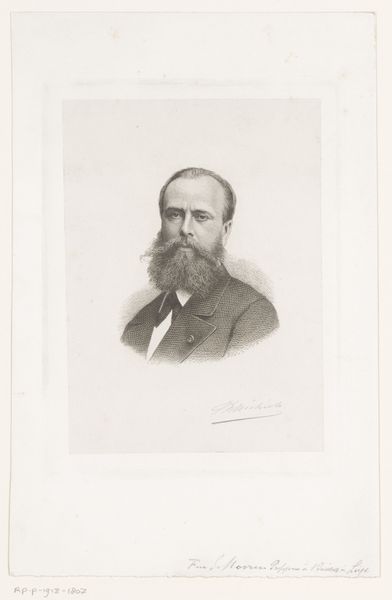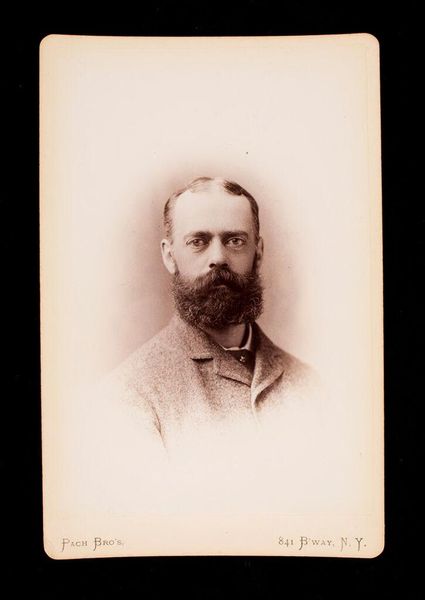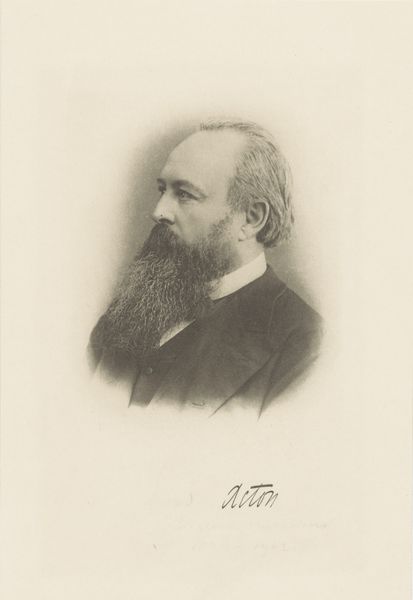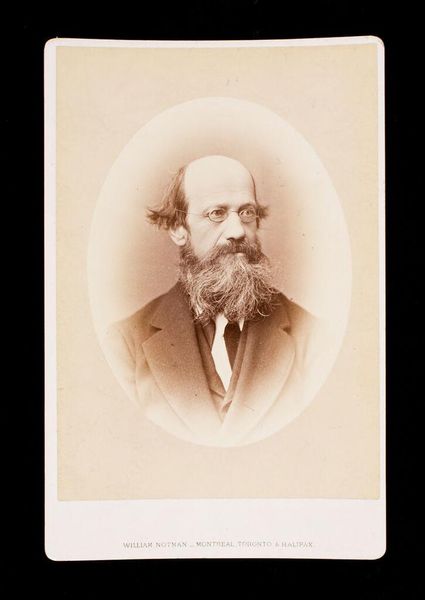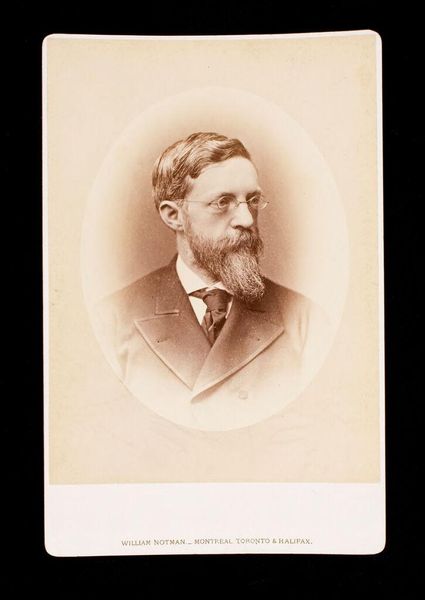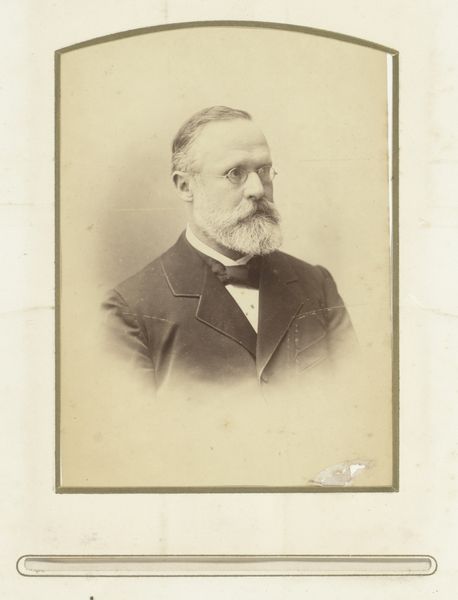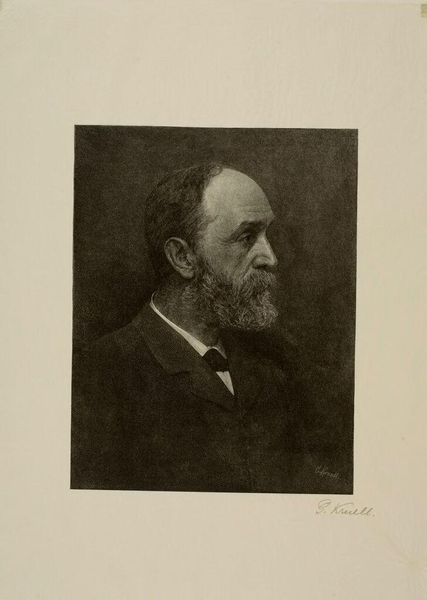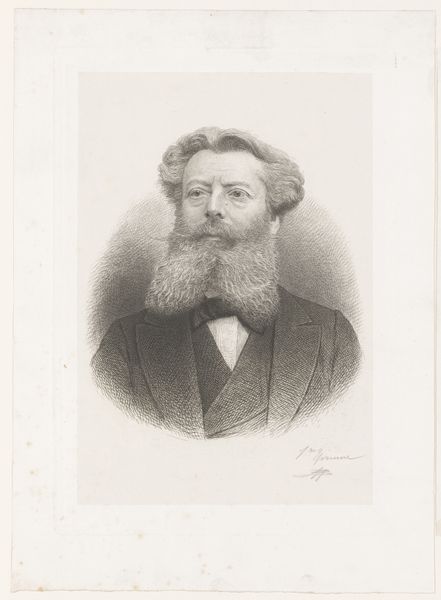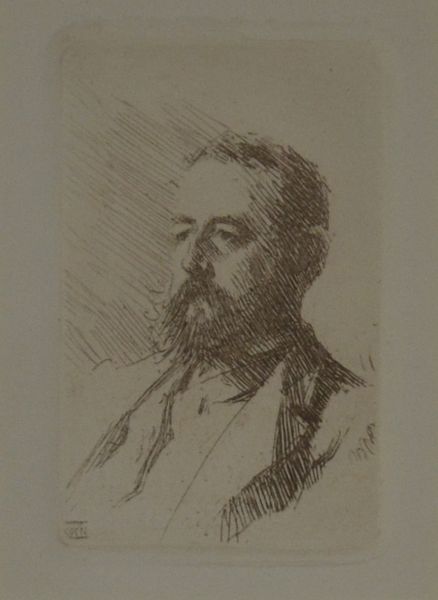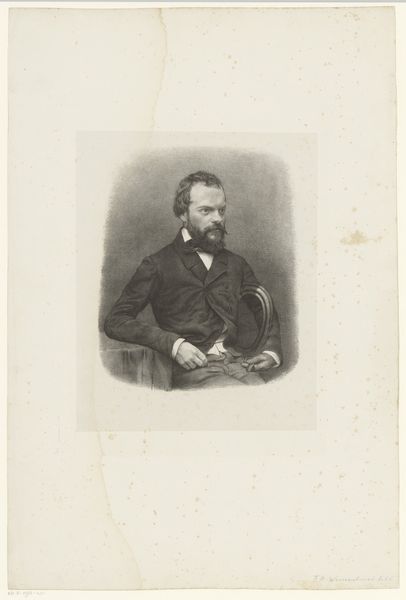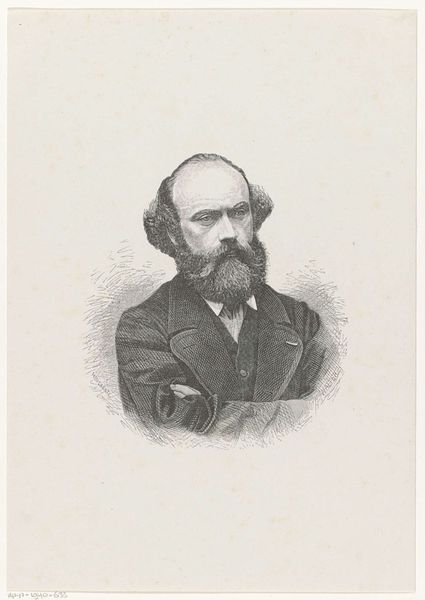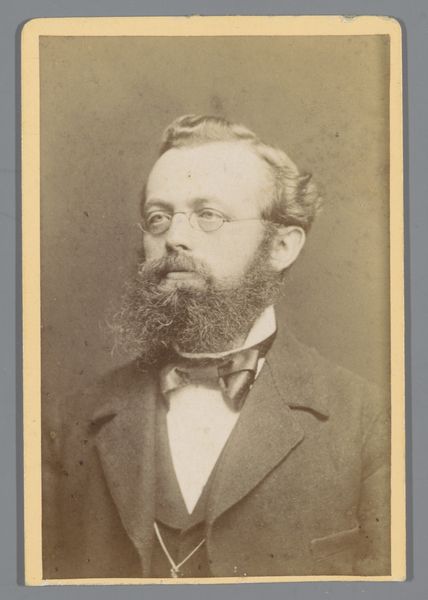
Copyright: Public domain
Curator: Let's delve into this intriguing portrait, crafted by Josef Kriehuber in 1864. It depicts Hermann Rollett, an Austrian poet, rendered primarily in graphite, likely as a print. Editor: Oh, he has such kind eyes! And that beard... you could lose a small animal in there. It’s got a wonderful softness, almost dreamlike quality to the overall piece. Curator: Indeed, the softness you observe speaks to the Romanticism inherent in its era. Think of the material conditions surrounding this image's creation: graphite readily available, the burgeoning print industry making art accessible to a wider audience, and portraiture solidifying the individual's status. How labor and technological development helped in making this accessible to others besides the bourgeoisie, enabling more artistic possibilities than traditional mediums. Editor: Right! There’s that mass-produced element we cannot disregard, especially because there is that signature, with flowing lines below… Almost making Rollet become a product in its era, rather than simply a depiction of a man. Yet the way Kriehuber renders light – see how it catches the cheekbones and glasses– it lends the piece an incredible amount of personality. Curator: The print's replicability complicates the relationship between the artist's hand and the final product. Each print represents a piece of labor, consumed and disseminated into the market... It raises questions about originality. Editor: Maybe… Still, what captures me isn't necessarily the mechanics but the almost melancholic gaze. Rollett seems like someone carrying the weight of verse, the world. I would bet my hat it took a while, maybe some weeks or months of the poet being bored just for this small print. Curator: The execution clearly relied on established modes of production to circulate. Consider what it cost both artist and sitter in terms of labor power, that labor itself contributing to social meanings in this particular format. Editor: In any case, this image invites us to meditate not only on the person portrayed, but on the complex world around him, made available by reproducible print work, or perhaps even just on mortality. I have no idea who Hermann Rollett was… Now I kind of want to find out. Curator: And perhaps, understanding production can give insight to appreciation of consumption? Interesting.
Comments
No comments
Be the first to comment and join the conversation on the ultimate creative platform.
